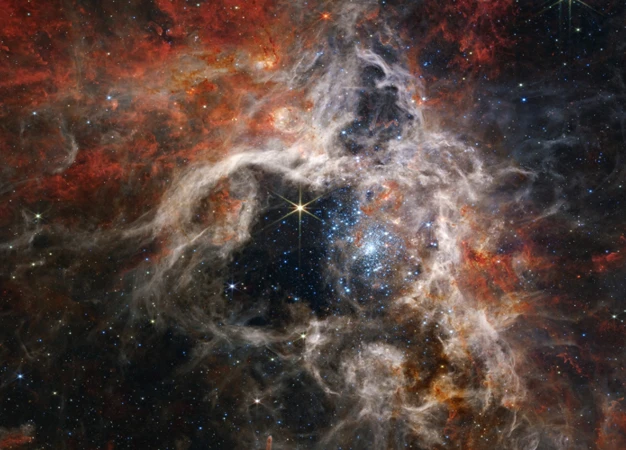Nebulas, those mesmerizing celestial wonders that adorn the vast canvas of outer space, have captivated our imaginations and inspired countless artists and astronomers alike. Their ethereal beauty and intricate formations have puzzled scientists for centuries, as they emit vibrant hues and showcase unique shapes that seem to defy the laws of nature. From the iconic Orion Nebula to the breathtaking Helix Nebula, these cosmic phenomena continue to bewilder and astonish us. In this article, we will delve into the breathtaking beauty of nebulas, unravel their mysterious origins, explore their stunning colors and shapes, and discuss their scientific significance. Join us as we embark on a celestial journey to unravel the enigmatic enclaves of the universe.
The Phenomenon of Nebulas
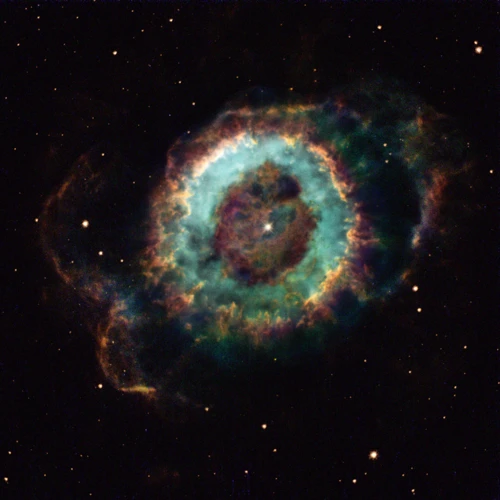
Nebulas, those intriguing and enigmatic formations scattered across the vast expanse of space, continue to captivate and baffle astronomers and stargazers alike. These celestial wonders emerge as a result of various astronomical phenomena, each one distinct in its own mesmerizing way. Nebulas come in different types, including emission nebulae, reflection nebulae, and dark nebulae, each exhibiting their own unique characteristics and cosmic beauty. It is believed that nebulas are formed through a combination of stellar explosions, intense radiation, and the gravitational pull of massive celestial bodies. While the process of nebula formation is still shrouded in mystery, scientists believe that they play a crucial role in the birth and evolution of stars, as well as in the creation of other celestial objects, such as planets and even black holes. As we peer into the depths of these captivating formations, we take another step toward unraveling the mysteries of our universe.
1. Types of Nebulas
There are various types of nebulas that grace the expanses of our universe, each distinct in its formation and appearance. One type is the emission nebula, which emits its own light due to energized gases within it. These nebulae are often characterized by their vibrant hues of red, pink, and green, which result from the emission of specific atoms and molecules, such as hydrogen and oxygen. Another type is the reflection nebula, which does not emit its own light but instead reflects the light of nearby stars. These nebulae appear blue because the scattered light tends to have shorter wavelengths. Dark nebulae, on the other hand, are dense regions that obscure the light from the stars behind them, creating patches of apparent darkness against the backdrop of the night sky. These nebulae are composed mainly of dust and gas and are often seen in the form of interesting shapes, such as tendrils and filaments. As we continue to explore the universe, each type of nebula offers a unique glimpse into the intricate and awe-inspiring nature of the cosmos.
2. Formation of Nebulas
The formation of nebulas is a fascinating and complex process that involves various astronomical events and phenomena. One of the most common ways nebulas are formed is through the explosive death of a massive star, known as a supernova. When a star reaches the end of its life cycle, it undergoes a cataclysmic explosion, releasing an immense amount of energy and material into the surrounding space. This explosion creates a shockwave that compresses the surrounding gas and dust, triggering the formation of a nebula. Another mechanism behind nebula formation is the intense radiation emitted by stars. Stars emit high-energy particles and powerful radiation that can ionize the surrounding gas and create glowing regions of ionized gas, known as emission nebulae. Additionally, the gravitational pull of massive celestial bodies, such as black holes or dense star clusters, can also contribute to the formation of nebulas. The gravitational forces exerted by these objects can pull gas and dust together, causing them to collapse and form dense regions, which eventually evolve into nebulae. The intricate and diverse formations of nebulas serve as a testament to the dynamic and ever-evolving nature of our universe. Understanding the formation processes of nebulas not only sheds light on the origins of these awe-inspiring structures but also provides valuable insights into the formation of other celestial objects, such as planets and even the enigmatic origins of black holes.
Colors and Shapes of Nebulas
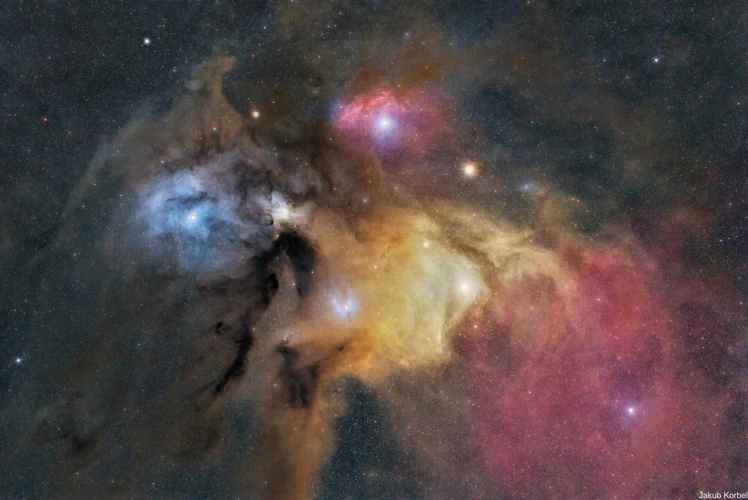
The colors and shapes of nebulas in outer space are nothing short of awe-inspiring. These celestial wonders are adorned with a vibrant palette that dazzles the eye and ignites the imagination. From hues of deep crimson and fiery orange to electric blues and cosmic greens, the colors of nebulas are a testament to the elements present within them. The unique shapes they take on are equally enthralling, with some resembling billowing clouds while others form intricate pillars and tendrils that stretch across light-years of space. These stunning colors and shapes are a result of various factors, including the composition of gases and dust within the nebula, the presence of nearby stars, and even the effects of gravity. Each nebula tells a cosmic story, inviting us to marvel at the kaleidoscope of beauty that exists beyond our Earthly horizons.
1. Vibrant Hues
The phenomenon of nebulas extends beyond their captivating shapes and structures. One of the most remarkable aspects of nebulas is their vibrant hues that adorn the cosmic canvas. These ethereal clouds of interstellar gas and dust come alive with a kaleidoscope of colors, ranging from deep reds and fiery oranges to brilliant blues and luminous greens. The colors observed in nebulas are a result of different factors such as the composition of gases, the interaction with nearby stars, and the presence of ionized particles. For instance, emission nebulae, like the famous Orion Nebula, radiate stunning shades of red and pink due to the ionization of hydrogen gas caused by the intense ultraviolet radiation from nearby stars. On the other hand, reflection nebulae, such as the Pleiades, display a beautiful blue hue as the starlight scatters off the dust particles within the nebula. These vibrant colors create a mesmerizing tapestry in the night sky, evoking a sense of wonder and awe as we gaze upon the majestic beauty of the cosmos. As we continue to explore and unravel the secrets of nebulas, their breathtaking colors serve as a constant reminder of the vastness and beauty of our universe.
2. Pillars and Clouds
Pillars and clouds are fascinating features that can be found within nebulas, adding a sense of depth and dimension to their otherworldly landscapes. These structures are often formed by the gravitational forces present in the surrounding area. One notable example is the iconic Pillars of Creation within the Eagle Nebula. These towering columns of interstellar gas and dust are sculpted by the intense radiation emitted by nearby stars, which erode the surrounding material over millions of years. The dense regions within these pillars serve as stellar nurseries, nurturing the birth of new stars. Another remarkable example is the Carina Nebula, where billowing clouds of gas and dust create a captivating display of swirling colors and intricate patterns against the backdrop of the cosmos. These clouds are often the remnants of massive explosions or outflows from young, energetic stars. Their intricate formations provide astronomers with valuable insights into the processes of star formation and the dynamic nature of the universe. As we explore these pillars and clouds within nebulas, we unravel the complex interplay between gravity, radiation, and the birth of celestial entities.
Famous Nebulas in the Cosmos

The cosmos is adorned with a multitude of breathtaking nebulae, each with its own distinct personality and allure. Among the most famous nebulae is the Orion Nebula, a celestial masterpiece located in the constellation of Orion. This stellar nursery is a hotbed of star formation, showcasing a mesmerizing blend of vibrant hues and intricate structures. Another notable nebula is the Helix Nebula, affectionately known as the “Eye of God” due to its striking resemblance to a giant eye in the sky. Its ethereal glow and intricate spirals mesmerize observers, providing a glimpse into the intricate processes at play in the universe. The Eagle Nebula, made famous by the iconic “Pillars of Creation” image taken by the Hubble Space Telescope, showcases towering pillars of dust and gas, where new stars are born. These famous nebulae not only serve as celestial showpieces, but also provide valuable insights into the enigmatic origins of celestial bodies, such as black holes and binary star systems. As we marvel at the wonders of these cosmic tapestries, we are reminded of the vast mysteries that await our exploration.
1. The Orion Nebula
The Orion Nebula, also known as Messier 42 or M42, is undoubtedly one of the most famous and awe-inspiring nebulas in the cosmos. Located in the sword of the Orion constellation, this celestial wonder is visible to the naked eye on clear nights. Spanning approximately 24 light-years across, the Orion Nebula is a stellar nursery, where new stars are born from vast clouds of gas and dust. Its vibrant colors, ranging from bright pinks and oranges to deep blues, mesmerize astronomers and stargazers alike. At the heart of the Orion Nebula lies a young and energetic star cluster called the Trapezium, which illuminates the surrounding gas and dust, creating a breathtaking spectacle. The intense ultraviolet radiation emitted by these young stars excites the hydrogen gas, causing it to emit its characteristic red glow. The Orion Nebula offers a glimpse into the early stages of star formation, providing valuable insights into the enigmatic origins and evolution of stars. Its beauty and scientific importance have made it a prime target for astronomers using space telescopes such as the Hubble Space Telescope, enabling them to capture stunning, high-resolution images that reveal intricate details of this cosmic marvel. Exploring the Orion Nebula gives us a deeper understanding of the intricate mechanisms that shape the cosmos and brings us closer to unlocking the mysteries of our universe.
2. The Helix Nebula
The Helix Nebula, also known as NGC 7293, is a mesmerizing and iconic nebula located in the constellation of Aquarius. Its distinctive shape resembles that of a cosmic eye, earning it the nickname “The Eye of God.” This nebula is classified as a planetary nebula, formed during the late stages of a star’s life when it exhausts its nuclear fuel and sheds its outer layers, leaving behind a compact and hot core known as a white dwarf. The stunning beauty of the Helix Nebula lies in its intricate and delicate structure, with its outer layers expanding and creating a mesmerizing glow of colorful gases. At the heart of the nebula lies the dying star, which illuminates the surrounding gas clouds, causing them to fluoresce and emit light. The Helix Nebula offers a glimpse into the future fate of our own sun, as it too will eventually undergo a similar transformation billions of years from now. Its study provides valuable insights into the life cycle of stars and the processes that shape the cosmos. Exploring this celestial marvel through powerful telescopes allows us to witness the grandeur and fragility of the universe, reminding us of our place in the vast cosmic tapestry.
3. The Eagle Nebula
The Eagle Nebula, also known as Messier 16 or the Star Queen Nebula, is a stunning cosmic marvel located approximately 7,000 light-years away in the constellation Serpens. What makes the Eagle Nebula particularly captivating is its famous Pillars of Creation, which were immortalized by the iconic Hubble Space Telescope image. These towering pillars of interstellar gas and dust are sculpted by the intense radiation and stellar winds emanating from the nearby massive young stars. The Pillars of Creation serve as stellar nurseries, where new stars are born, and their intricate structures provide valuable insights into the process of star formation. These towering columns, illuminated by the glow of nearby stars, create a mesmerizing tapestry of light and shadow that enchants and intrigues astronomers and space enthusiasts alike. The Eagle Nebula continues to be a subject of extensive scientific research, as scientists seek to understand the dynamics of star formation, the impact of massive stars on their surroundings, and the potential for planetary systems to form within such nebulae. The Eagle Nebula stands as a testament to the breathtaking beauty and immense complexity of the cosmos, inviting us to contemplate the enigmatic wonders that lie beyond our reach.
Exploring Nebulas with Telescopes
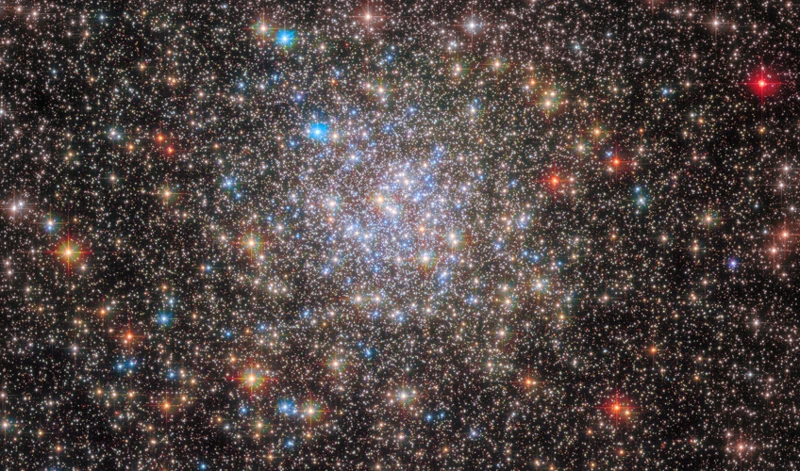
Exploring the majestic beauty of nebulas is a task best undertaken with the aid of telescopes, both professional and amateur. With advancements in technology, observatories and space telescopes have provided us with stunningly detailed images of distant nebulas, allowing us to marvel at their intricate structures and vibrant colors. The Hubble Space Telescope, for example, has captured breathtaking images of nebulas such as the iconic Orion Nebula, revealing their ethereal beauty in unprecedented detail. But it’s not just professionals who can enjoy these wonders. Amateur astronomers equipped with their own telescopes and astrophotography equipment can also observe and capture images of nebulas, adding to our collective knowledge of these celestial phenomena. Whether through professional observatories or personal telescopes, exploring nebulas unveils a universe brimming with awe and inspiration. So grab your telescope and embark on a fascinating journey through the cosmic wonders of the nebula-filled night sky.
1. Observatories and Space Telescopes
When it comes to exploring nebulas, observatories and space telescopes play an invaluable role in unraveling the secrets of these cosmic wonders. Observatories, equipped with state-of-the-art instruments, are strategically positioned in various locations around the world to maximize their visibility and capture high-resolution images of nebulas. Some of the most renowned observatories include the Hubble Space Telescope and the Chandra X-ray Observatory, which have revolutionized our understanding of nebulas by capturing stunning images and data. The Hubble Space Telescope, for example, has provided us with breathtaking images of nebulas in unprecedented detail, allowing us to marvel at the intricate structures and vibrant colors of these celestial formations. Additionally, space telescopes, such as the James Webb Space Telescope set to launch in 2021, are specifically designed to observe the universe from space, free from the interference of Earth’s atmosphere. This will enable scientists to capture even clearer images and gather crucial data about nebulas and other celestial phenomena. The combination of ground-based observatories and space telescopes ensures that astronomers have a comprehensive view of nebulas, expanding our knowledge and unlocking deeper insights into the mysteries of the cosmos.
2. Amateur Telescope Observations
Amateur telescope observations have revolutionized the field of astronomy, allowing enthusiasts and hobbyists to contribute valuable data and insights to the study of nebulas. With the advancements in technology, amateur astronomers can now access powerful telescopes and imaging equipment, enabling them to capture detailed images of nebulas from the comfort of their backyard. These dedicated individuals play a crucial role in expanding our understanding of these cosmic wonders by documenting new nebulas, tracking changes in their appearance over time, and even discovering previously unknown features within them. Amateur astronomers often participate in citizen science projects, collaborating with professional researchers to analyze data and contribute to scientific discoveries. Their keen observations and meticulous recordings provide valuable evidence that aids in unraveling the mysteries of the universe. As amateurs continue to explore the depths of the night sky, their passion and dedication shine a light on the breathtaking beauty and enigmatic nature of nebulas, inspiring future generations of astronomers to delve deeper into the secrets of the cosmos.
Scientific Importance of Nebulas
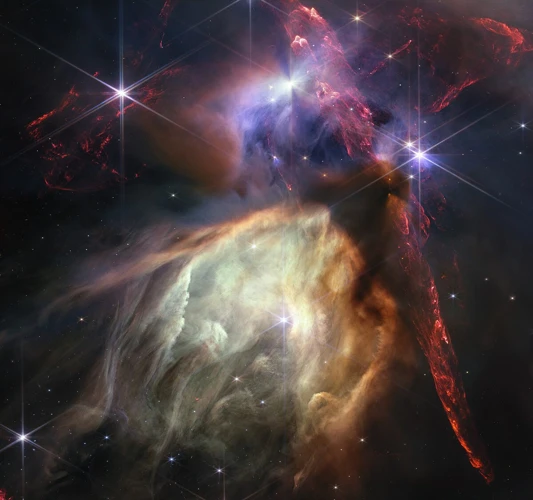
The scientific importance of nebulas transcends their sheer visual splendor, as these cosmic phenomena provide crucial insights into the processes that shape the universe. Nebulas serve as stellar birthplaces, where massive clouds of gas and dust coalesce under gravity’s watchful eye, giving rise to new stars. These stellar nurseries offer scientists a unique opportunity to study the formation and evolution of stars, unraveling the mysteries of stellar dynamics and the enigmatic origins of celestial objects such as black holes (source). Additionally, nebulas enable astronomers to study chemical enrichment in the cosmos, as these vast reservoirs of interstellar matter are rich in heavy elements forged in the hearts of dying stars. By analyzing the composition of nebulas, scientists can gain insights into the processes that drive the evolution of galaxies, shedding light on the remarkable diversity of celestial bodies and their potential for harboring habitable exoplanets (source). Through continued exploration and observation, nebulas continue to be a treasure trove of scientific knowledge, offering glimpses into the intricate workings of the universe.
1. Stellar Birthplaces
Stellar birthplaces, often found within the breathtaking nebulae scattered across the cosmos, are an intriguing subject of study for astronomers. These celestial nurseries serve as the cosmic cradles where new stars are born. Within the dense clouds of gas and dust in nebulae, gravitational instabilities and interactions occur, leading to the collapse of these regions. As the cloud collapses, it begins to spin and flatten into a swirling disk-like structure known as an accretion disk. In the heart of this disk, a protostar forms, gathering more material from its surroundings through accretion, gradually growing in size and density. This process can take millions of years, but eventually, when the temperature and pressure at the core of the protostar reach a critical point, nuclear fusion ignites, birthing a new star. This remarkable phenomenon of stellar birth plays a vital role in the evolving cosmic web, shaping the structure of galaxies and influencing the formation of other celestial objects like planetary systems and even black holes. By studying these stellar nurseries, astronomers can gain valuable insights into the mechanisms behind star formation and the intricate dance of celestial bodies in the night sky.
2. Chemical Enrichment
The phenomenon of chemical enrichment within nebulas is a critical aspect of their scientific importance. Nebulas act as cosmic factories, producing and dispersing elements essential for the formation of new stars and planetary systems. Within these vast clouds of gas and dust, chemical reactions occur, leading to the creation of complex molecules and compounds. The most abundant element produced in these reactions is hydrogen, followed by helium and trace amounts of heavier elements. This process of chemical enrichment contributes to the evolution of galaxies, as the newly formed elements are eventually expelled into space through stellar explosions like supernovae. These enriched materials then become the building blocks for future generations of stars, planets, and potentially even life-sustaining environments on exoplanets. The intricate dance of chemical processes within nebulas is a testament to the interconnectedness of the universe, continuously forging the path for celestial wonders to emerge. To learn more about the interconnectedness of celestial bodies, you can explore the fascinating world of binary stars and their mesmerizing celestial dance.
The Future of Nebula Exploration
As we gaze into the vast depths of space, the future of nebula exploration holds tremendous promise and excitement. Advancements in technology and space exploration techniques have opened up new avenues for studying and understanding these captivating cosmic wonders. From cutting-edge telescopes to space missions dedicated to exploring nebulae, scientists and astronomers are poised to uncover even more secrets that lie within these enchanting enclaves.
1. Space Telescopes: Space-based observatories like the Hubble Space Telescope have revolutionized our understanding of nebulae. These powerful instruments allow us to peer deeper into space with unprecedented clarity and detail. In the future, more advanced space telescopes, such as the upcoming James Webb Space Telescope, will enable scientists to study nebulae in even greater depth, potentially unveiling hidden processes and structures within these celestial formations.
2. Robotic Explorers: Robotic missions are being developed to explore nebulae up close and personal. These missions are designed to send spacecraft and probes directly into nebulous regions, providing valuable data and imagery. These robotic explorers will be equipped with sophisticated instruments and sensors to analyze the chemical composition, temperature, and dynamics of nebulae, allowing scientists to gain a deeper understanding of their formation and evolution.
3. Interstellar Travel: While still in the realm of science fiction, the prospect of interstellar travel opens up exciting possibilities for future nebula exploration. The ability to reach neighboring star systems and explore their accompanying nebulae would provide invaluable insights into the diversity and complexity of these cosmic phenomena. However, significant technological advancements and breakthroughs in propulsion systems would be required to make interstellar travel a reality.
4. Collaborative Efforts: The future of nebula exploration will rely heavily on international collaboration and cooperation among space agencies, research institutions, and astronomers worldwide. Pooling resources and expertise will enhance our collective understanding of nebulae, enabling scientists to tackle complex questions and make groundbreaking discoveries.
As we embark on this new chapter of nebula exploration, we can anticipate a future filled with wonder, discovery, and awe-inspiring revelations. With each technological leap forward and every new mission launched, we inch closer to unraveling the mysteries of these celestial marvels and deepening our understanding of the vast cosmos that surrounds us.
Conclusion
In conclusion, venturing into the breathtaking beauty of nebulas in outer space is truly an awe-inspiring experience. These cosmic marvels, with their vibrant hues and intricate shapes, continue to unveil the secrets of the universe and inspire our imagination. From the mesmerizing Orion Nebula with its stellar nursery to the enchanting Helix Nebula that showcases the remnants of a dying star, each nebula offers a glimpse into the intricate workings of the cosmos. Through observatories, space telescopes, and amateur observations, we have been able to explore and study these celestial phenomena, deepening our understanding of stellar birthplaces and chemical enrichment. Nebulas hold great scientific importance, allowing us to unravel the mysteries of the universe and to ponder our own place within it. As technology advances, we can anticipate even more discoveries and insights into the fascinating realm of nebulas. The future of nebula exploration is an exciting prospect, promising further revelations and expanding our knowledge of the cosmos. So, let us continue to gaze at the stars, explore the wonders of nebulas, and marvel at the breathtaking beauty that lies beyond our Earthly reach.
Frequently Asked Questions
1. What is the difference between emission nebulae and reflection nebulae?
Emission nebulae are clouds of ionized gas that emit light of various colors, while reflection nebulae are made up of dust particles that scatter and reflect light from nearby stars.
2. Can nebulas be seen with the naked eye?
Yes, some nebulas, such as the Orion Nebula, can be seen from Earth without the aid of a telescope. However, the use of binoculars or a telescope allows for a more detailed and stunning view.
3. How do nebulas get their vibrant colors?
Nebulas obtain their vibrant colors through a process known as emission. The colors largely depend on the type of gases present in the nebula and the energy being emitted by nearby stars.
4. Are nebulas static or do they change over time?
Nebulas are dynamic and ever-changing. As new stars form and others reach the end of their lifecycles, nebulas experience fluctuations in size, shape, and composition.
5. Can nebulas form planets?
While nebulas serve as stellar nurseries, giving birth to new stars, they can also play a role in the formation of planets. The dust and gas within nebulas can eventually clump together, forming planetesimals, which then develop into planets.
6. Are all nebulas visible in the same wavelengths of light?
No, nebulas can emit and reflect light across a broad range of wavelengths, including visible light, ultraviolet light, and infrared light. Observing nebulas across multiple wavelengths can provide a more comprehensive understanding of their properties.
7. Are nebulas only found in our Milky Way galaxy?
No, nebulas can be found in galaxies throughout the universe. They are not exclusive to our Milky Way and can be observed in various shapes and sizes in other galaxies as well.
8. Do nebulas exist in other forms besides gas and dust?
Yes, nebulas can also exist in other forms, such as planetary nebulas. These are shells of gas and dust expelled by dying stars, creating intricate and often symmetrical patterns.
9. Can nebulas provide clues about the formation of life-sustaining planets?
Studying nebulas can offer insights into the conditions necessary for the formation of habitable planets. By examining the chemical composition and structures within nebulas, scientists can gain a better understanding of the processes that drive planetary habitability.
10. How are nebulas named?
Nebulas are typically named after their dominant features or the constellations in which they are located. For example, the Orion Nebula is named after the constellation Orion, where it is prominently situated.

